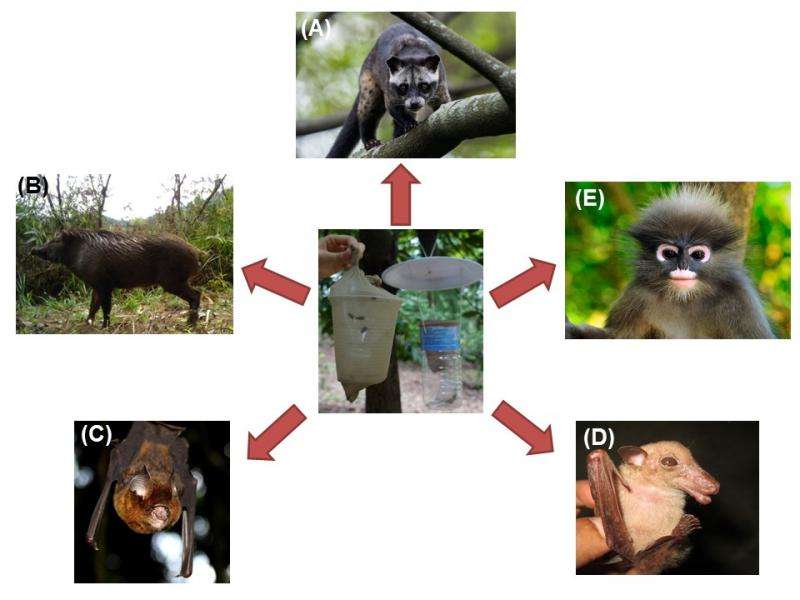Is mammal DNA in the guts of blowflies a feasible mammal monitoring tool?

Mammal DNA detected from the guts of blowflies indicated the presence of 11 mammal species at two tropical forest reserves in Malaysia. This new tool could soon join the list of conventional mammal monitoring tools, such as camera traps, used by conservation biologists. The study has been published in the journal Genome.
Conservation biologists need to survey the mammals present in tropical forests, and frequently use a wide variety of tools for this purpose - wire cages and nets, camera traps, searching for scat and footprints, interviews with the locals, sightings, and hair traps. A recently proposed addition to the mammal survey toolbox is mammal DNA detected from the guts of blowflies. This method is not stressful to the mammals, requires the least taxonomical or ecological expertise, and is potentially able to detect rare and lookalike species. Compared to conventional tools that require conservationists to search for mammals themselves, the unfussy blowflies that feed on carcasses, faeces, or wounds of wild animals in tropical forests are experts at finding and collecting mammal DNA. Mammal DNA detected from the guts of blowflies - blowfly-derived DNA, has attracted increasing interest from conservation biologists, but is it a feasible mammal monitoring tool in the real world and how does it compare with the current survey methods?
To address these questions, researchers from the University of Malaya, Universiti Malaysia Terengganu, and Monash University Malaysia compared the performance of blowfly-derived DNA against conventional mammal survey tools (wire cages, nets for capturing bats, hair traps, and scat collection) at Ulu Gombak Forest Reserve, peninsular Malaysia with recent reports of small- to medium-bodied mammals. They also compared side-by-side the performance of blowfly-derived DNA with the most popular mammal surveying tool - camera traps in Tembat Forest Reserve, peninsular Malaysia with large-bodied mammals roaming around the area.
Compared to the conventional survey tools, blowfly-derived DNA detected both flying and non-flying mammals from wider body size ranges at Ulu Gombak Forest Reserve, such as small-sized bats and large-sized wild boars. The detection of blowfly-derived DNA included a near threatened species - dusky leaf monkey, which had not been previously recorded in the forest using conventional tools. Blowfly-derived DNA also detected more flying or tree-living mammals than those detected by camera traps. Most mammals detected were unique to each method used, indicating that employing multiple survey tools may be the fastest way to detect different groups of mammals. Although mammals were the focus of detection, DNA of other vertebrate groups was also detected from blowfly guts – birds, fish, lizards, snakes, and turtles.

Provided by University of Malaya




















